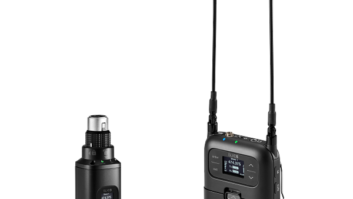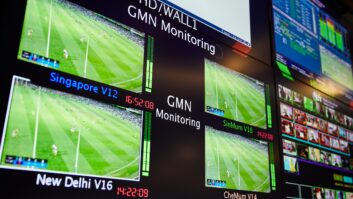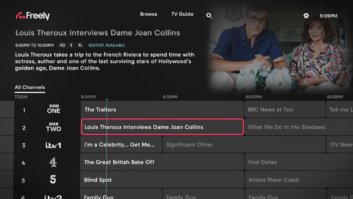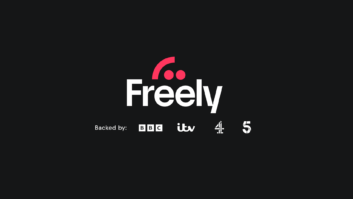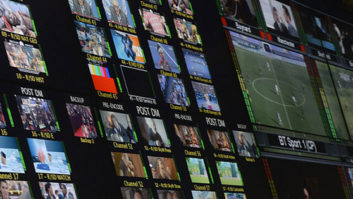European broadcast wireless audio users will have to swap channels, and probably buy new equipment, as governments comply with an EU Directive on what to do with broadcast spectrum following the analogue switch off. David Fox reports.
The EU wants to use the 800MHz frequency band used by analogue TV for mobile communications and high-speed internet access, which will mean repositioning some TV channels and a frequency switch for users of radio microphones.
The UK is one of the first countries to make this change, as governments see the opportunity to make billions from the ‘digital dividend’ sell off (Germany raised €3.576 billion last May for its 800MHz spectrum). Starting this month, licensed wireless users in the UK have to start moving from Channel 69 (854-862 MHz) to Channel 38 (606-614 MHz), which generally involves investment in completely new equipment. Sweden, Germany and France will be among the next wave of countries making the change.
“It’s quite a significant move for the whole industry in Europe,” says Sony’s Strategic Marketing Manager, Bill Drummond. Not all countries will be moving to Channel 38 (Sweden is going to Channel 42, others are going to 51).
Channel 69 is part of the wider 790-862MHz band that is being reallocated for new LTE 4G mobile services. “There is tremendous pressure on RF spectrum. The frequencies from 470MHz all the way up to the bottom of Channel 69, which is 854MHz, traditionally have been allocated solely for broadcast or services ancillary to broadcasting,” such as wireless microphones, said Alan March (pictured), business development specialist, Sennheiser.
Television’s move to digital transmission “freed up” frequencies for other uses, as far as regulators were concerned, but “far from being unused, these frequencies are in use daily for large production events,” including broadcasting, theatre and conferences, he added. “A programme like The X Factor goes to air using in excess of 70 channels of wireless products. That needs a lot of spectrum.”
Finite tuning range
So broadcasters, manufacturers and others across the programme making and special events sector (PMSE) have spent a lot of time over the last 18 months lobbying for both a move to a new clear frequency and for compensation due to the expense of modifying existing equipment or buying new.
Both Sony and Sennheiser are members of BEIRG (the British Entertainment Industry Radio Group – www.beirg.co.uk), which works to ensure that sufficient quantity and quality of spectrum is available to the entertainment industry, and ran an effective Save Our Sound campaign to ensure wireless users weren’t squeezed out. “We’re very concerned with our customers’ requirements and making sure their concerns are represented to government,” said Drummond. In the UK alone, the PMSE sector employs more than 150,000 people producing content.
It managed to win an agreement that any wireless user who purchased a licence from the regulator should receive about 55% of the replacement cost (as detailed in a comprehensive rate card which sets out what is considered a comparable current model for obsolete equipment). Any equipment claimed for has to be surrendered to the scheme administrator (Equiniti), or proof of modification shown before December 2012, when all claims must have been processed.
The funding is also going to hire companies (who don’t need a licence – their customers do), and will help pay for new equipment or upgrading those models that can be modified to work in the new bandwidth. Many of the more recent wireless systems from various manufacturers can support Channel 38, but this usually requires return-to-factory modification. “All wireless equipment has a finite tuning range, so Channel 69 equipment, generally speaking, does not tune to Channel 38,” said March.
Registration for the funding scheme finished at the end of last year, and about 66% of registered licence holders have applied for the funding.
“Channel 38 is a good fit in the UK as it is just being used for radio telescopes, and there are currently limits on using it near the telescopes (near Manchester and Cambridge), where channels 39 and 40 can be used in the short-term,” explained Drummond. There are also problems using Channel 38 where analogue switch-off hasn’t yet occurred.
The UK’s radio telescopes will be switching channels, but as the Netherlands also uses Channel 38 for radio astronomy, the UK could only use that frequency for short-range uses, such as wireless audio.
Channel 38 should be completely free, UK-wide, by 2012, when the analogue TV switch-off will be complete. The wireless systems on offer should, at least, cover channels 38-40. “It is likely that other countries will also choose 38, but it is not clear yet which country will move to which band,” added Drummond.
There will also be other bandwidth available locally for short-range use, in the white space not used by digital TV transmissions due to the risks of interference. Ofcom, the UK regulator, wants to see Channel 69 cleared by July 2012, so that it will then be available for use by incoming media organisations during the Olympics. Mobile companies should be able to start using the released frequencies at the end of 2012, assuming a successful (litigation free) outcome to the spectrum auctions.
Licence exempt
Part of Channel 70 (from 863-865MHz) is licence exempt, so you don’t need an operator’s licence. This tends to be used with less expensive wireless systems.
“If you are only running a couple of channels, that is still an option. However, it remains to be seen how clean that 863-865 will be once the new mobile services are rolled out. At the moment Ofcom’s position is that we can continue to use that. Not just in this country. It’s more or less a pan-European allocation,” says March.
This licence-free bandwidth can support four radio microphone channels, or up to six if you use one of the latest wireless systems, such as Sennheiser’s Range E G3 line. However, there is no de-regulated spectrum within the tuning range around Channel 38, so all systems using this bandwidth will require an operator’s licence. One shared licence per user covers multiple systems operating on the shared frequencies. Licences are available from the spectrum management company JFMG (www.jfmg.co.uk), and there are currently about 1,700 licences held for Channel 69.
Sony recently started deliveries of its first Channel 38 devices (analogue entry level UWP products for ENG use), and will soon have its 800-series analogue mid-range models and DWX-series digital products for the new frequency. Drummond sees it as “an opportunity [for customers] to re-invest in digital at the same time.”

